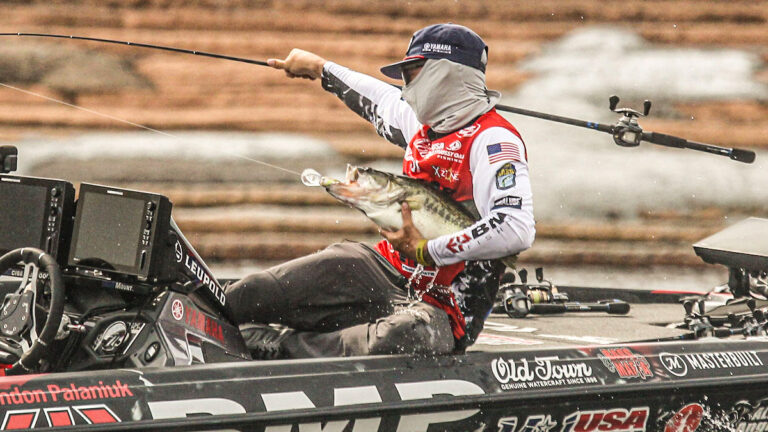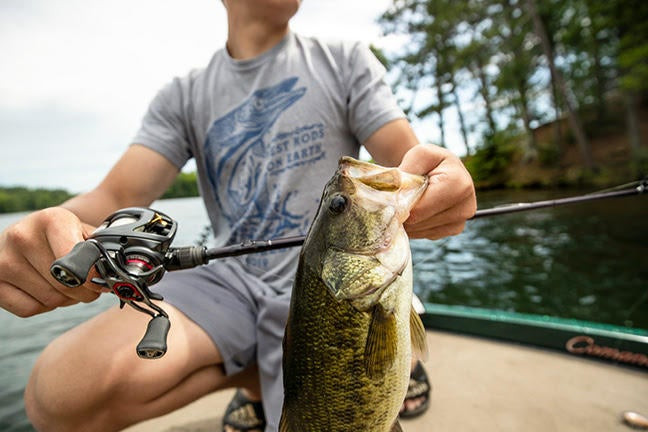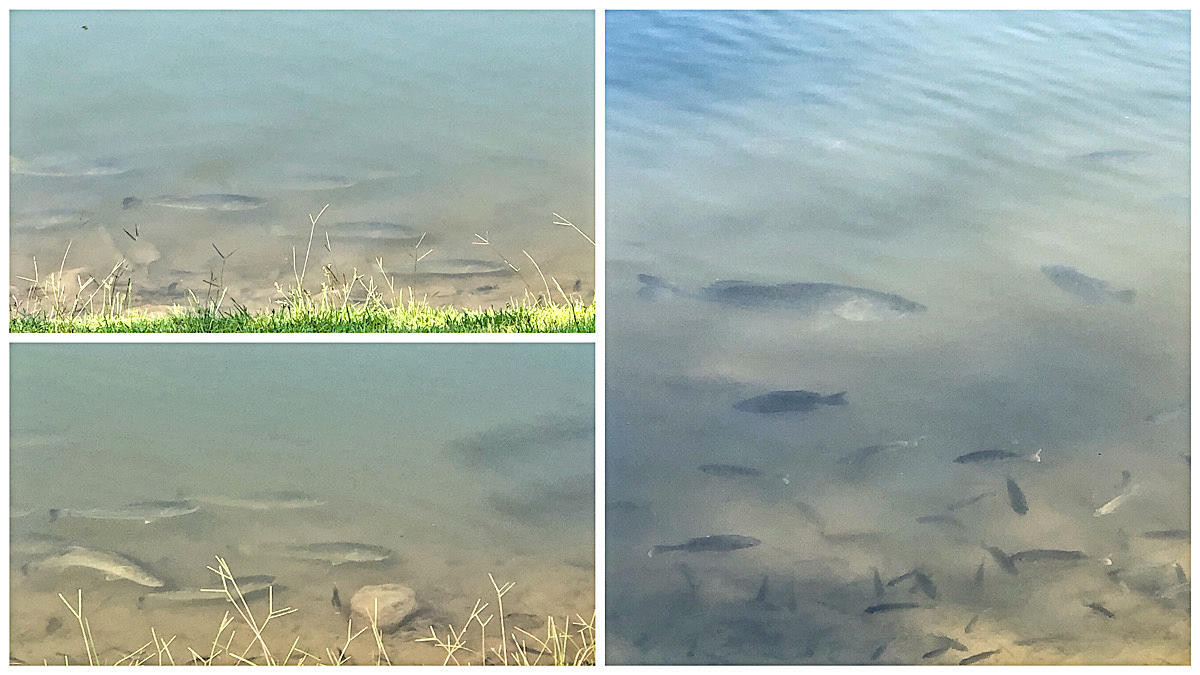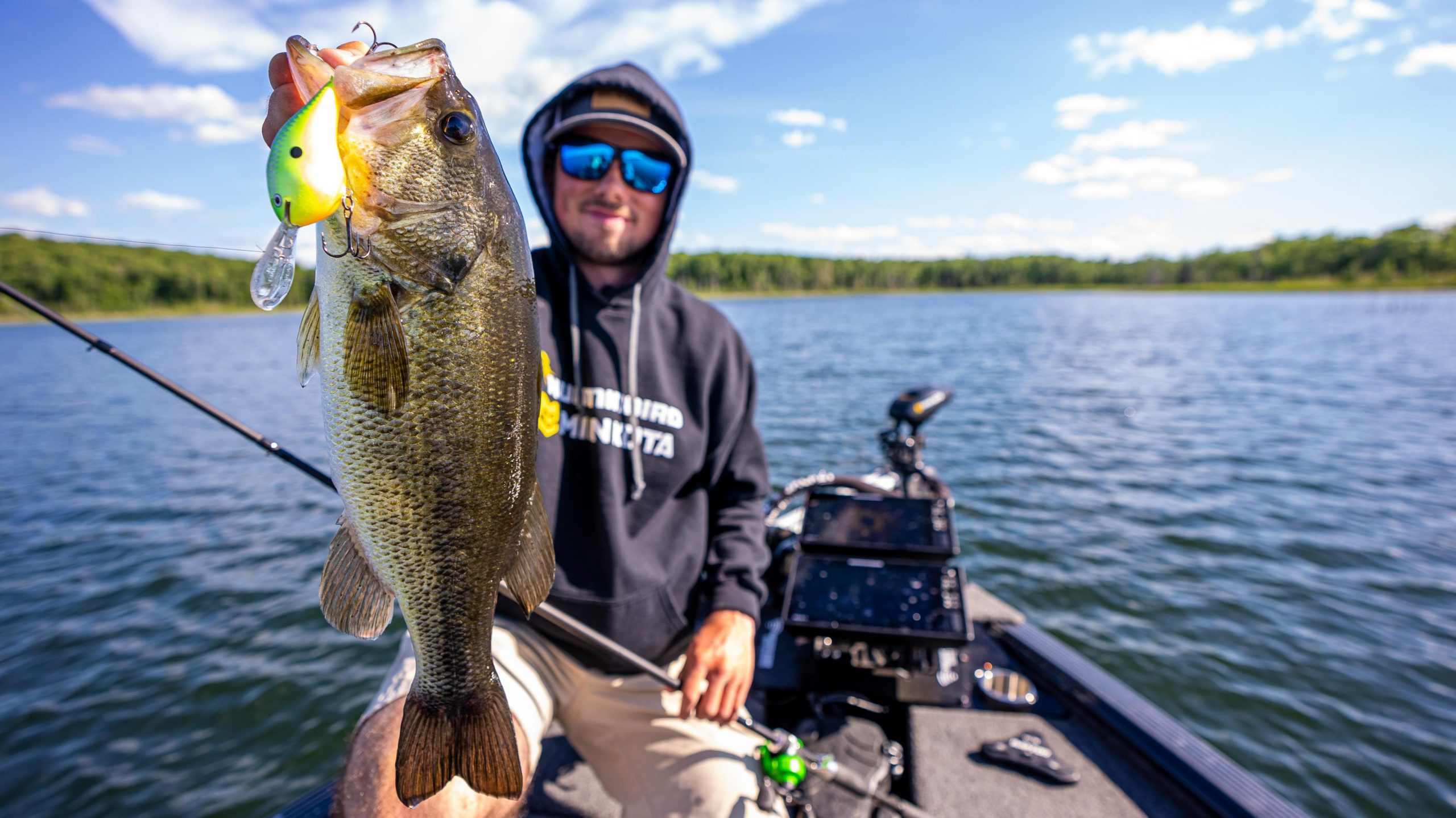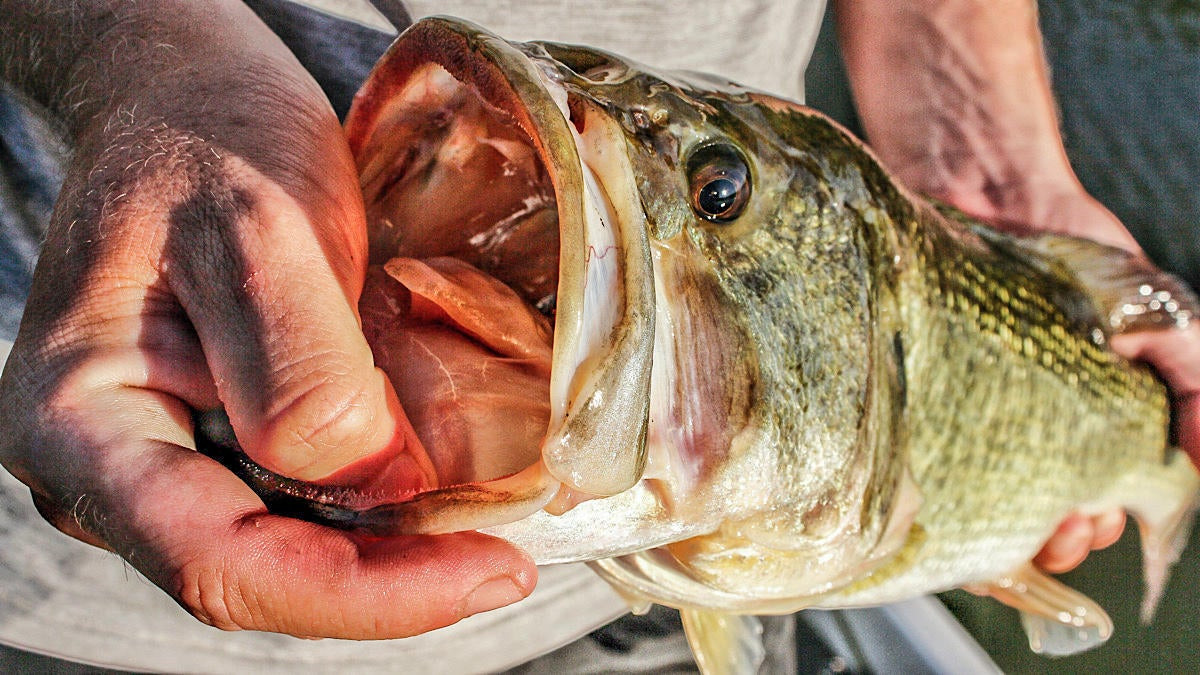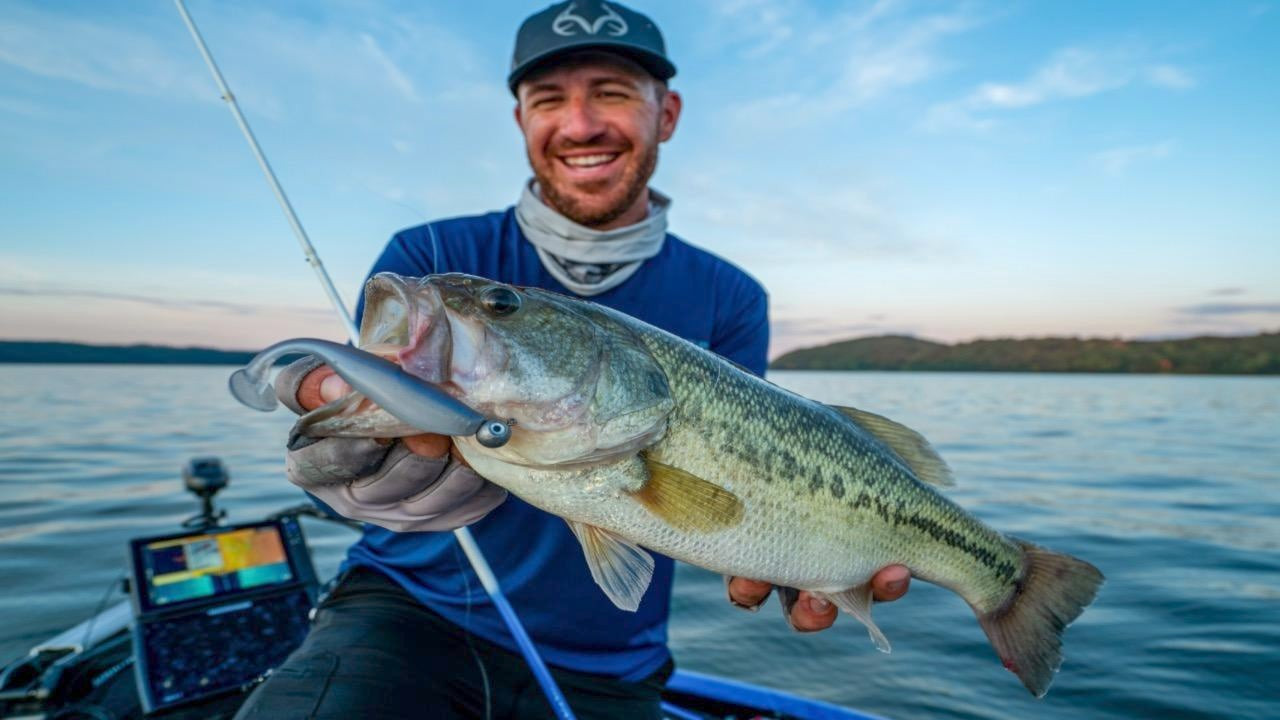Last week I had the pleasure of covering professional angler Brandon Palaniuk as he competed in the Bassmaster Elite Series tournament on Lake Fork. Palaniuk fished offshore all week and amassed an astonishing 102 pounds, 2 ounces over the course of four days of competition. That’s better than a 5-pound average per bass.
He fell just one spot shy of the win, finishing second to Lee Livesay who ended the event with 113 pounds, 11 ounces. Though Palaniuk wasn’t quite able to topple the hometown hero, he still put together a very impressive event and put on a master class of offshore bass fishing. We wanted to sit down with Palaniuk to pick his brain a bit about how he rotates through baits for offshore fish.
Palaniuk started off by stressing that no two schools are the exact same, and even went as far as to say no two fish in a school are the same for that matter.
“Each one is sitting down there with a little bit different personality,” Palaniuk said. “You just have to figure out which bait pushes their buttons enough to get them to bite.”
Option No. 1: Deep-diving crankbait
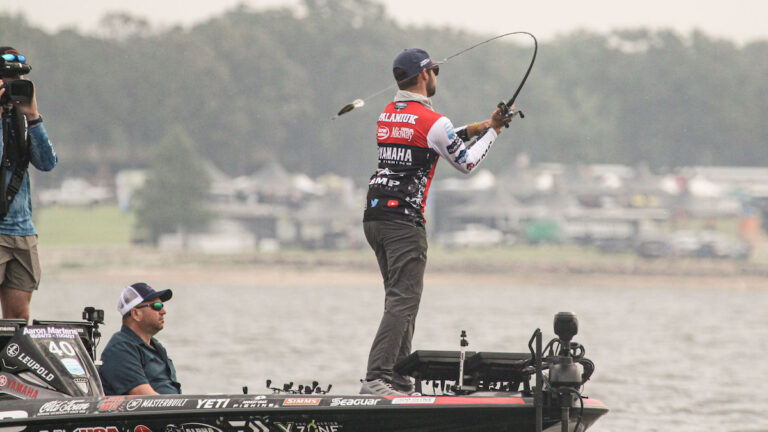
Typically for Palaniuk however, there’s a clear starting point with each school. Usually, he likes to start with a deep-diving crankbait.
He chooses a crankbait first because it’s the bait he can cover the most water with the fastest and it’s a bait he can usually fire up the school with. But there are all sorts of crankbaits that dive to a variety of depths; choosing which crankbait for that particular school of fish is very important.
“Most places that we fish offshore, a Rapala DT-16 gets the nod. That’s probably the one that gets thrown the most.”
As the name might imply, the Rapala DT-16 crankbait dives to approximately 16 feet. On many lakes and fisheries around the country where Palaniuk is targeting fish offshore, the fish will set up on holes that are 12 to 16 feet deep. So a 16-foot diver like the DT-16 gives Palaniuk the ability to get down to that depth and maintain contact with the bottom, which is a crucial part of cranking.
“You just have to adjust your crankbait selection to whatever you need to make sure you keep that contact with the bottom.”
Option No. 2: Swimbait
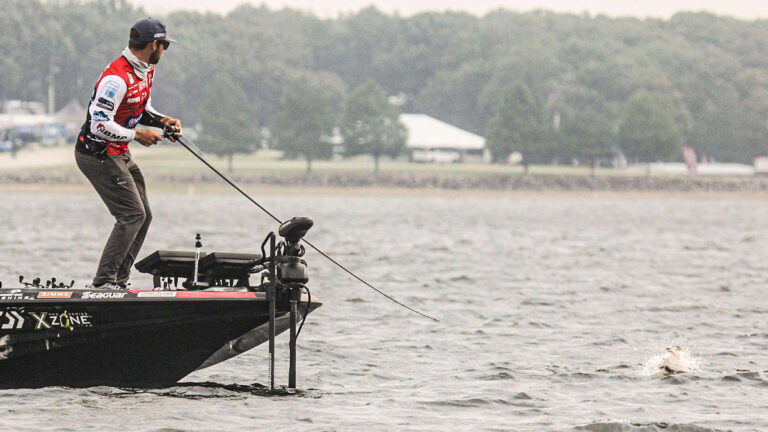
Once the crankbait bite dies down, Palaniuk will make the change to a swimbait.
“A lot of times I’ll switch to an X Zone Lures Mega Swammer and throw it on a 3/4-ounce VMC Boxer Jig Head,” Palaniuk said. “It’s a little bit slower but you still have a bait that’s constantly moving and you can cover water with.”
In case you haven’t picked up on it yet, the goal for Palaniuk in his bait rotation is to cover water as fast as possible while still being as efficient as possible. The crankbait can be reeled quickly, but once the fish start to shy away from it, the next-best thing is another moving bait that can be fished steadily.
“Sometimes, after you burn that crankbait through and catch a few, the ones that don’t want to bite kind of move out of the way and they break up a little bit,” Palaniuk said. “That swimbait allows them to settle back in but still gives them a moving target to chase.”
Option No. 3: Big flutter spoon

After he has done whatever damage he can with the crankbait and swimbait, he then moves to a big flutter spoon. Using his Humminbird electronics, Palaniuk is able to pitch the spoon around his boat.
“I use that spoon close to the boat, pitching it out to bass I see on MEGA Live or 360. I’ll hold my rod at about 10 to 11 o’clock and just burn it with my reel then let it fall back down. It’s just a pure reaction bite.”
Palaniuk admits that he could likely trigger a strike with the spoon right away if he were to cast it into a school when he first pulls up to a spot. But the main reason he doesn’t like to start with the spoon is the landing ratio. With a big flutter spoon, the bass can gain a lot of leverage and either throw the spoon on the jump or tear off underwater. So it’s not a bait he likes to start with, but it’s definitely a bait he can trigger additional strikes with once they slow down on the crankbait and swimbait.
“I think when you change from that horizontal action (of a crankbait and swimbait) to that vertical action (of a spoon), it makes those fish react,” Palaniuk said. “There are two things that trigger a fish to react, either a fleeing bait fish or a dying baitfish. You get both of those things with the retrieve on a spoon.”
Once Palaniuk has gotten all of the aggressive bass out of the way with the crankbait and swimbait and triggered whatever strikes he can with spoon, then it’s time to slow way down.
Option No. 4: Slow it way down

“I’ll go to an X Zone Lures Blitz Worm next and kind of drag it on the bottom,” Palaniuk said. “That worm floats, so you get a ton of action out of that thing. Even when you stop it, its thin tail just floats up and moves around, especially if you have any wind or current.”
Using a big worm like the 11-inch long Blitz Worm, Palaniuk is able to soak a bait and just really take his time to see if he can entice one or two more fish to bite. Once he’s done all he can do with the big worm, he’ll toss a Neko rig or a drop shot around as a last resort.
This handful of baits proved powerful in the hands of Palaniuk recently as he entered the Century Club for the first time with B.A.S.S. and caught his first ever “Dirty Thirty” on the Elite Series—a 5 fish limit of over 30 pounds. These are two goals Palaniuk has spent over a decade on the Elites trying to accomplish.




